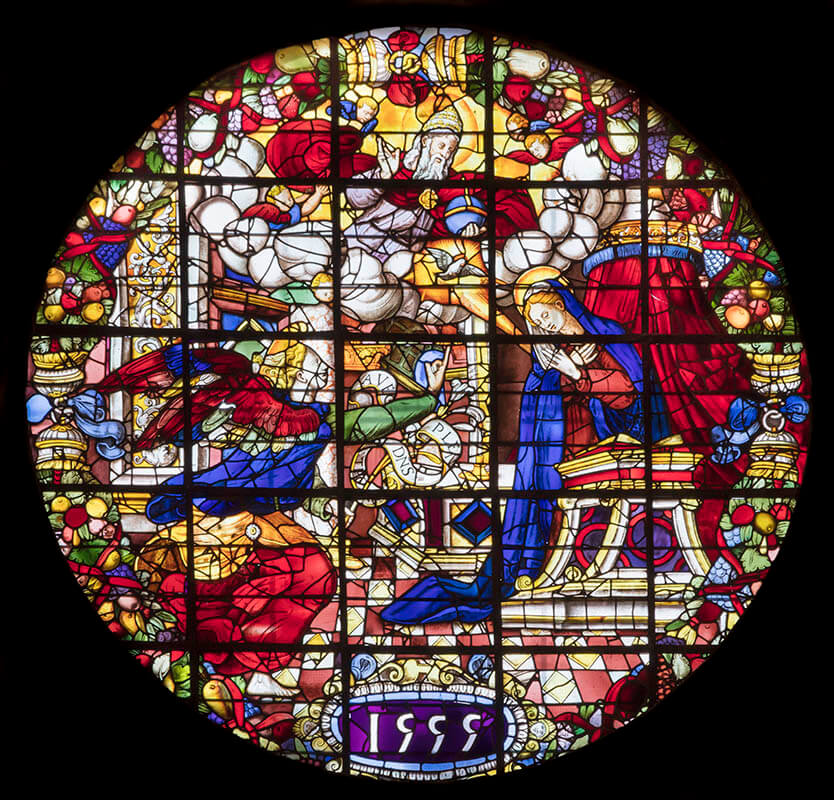
Vicente MENARDO, 1566
Prefachada principal sobre la puerta de San Miguel
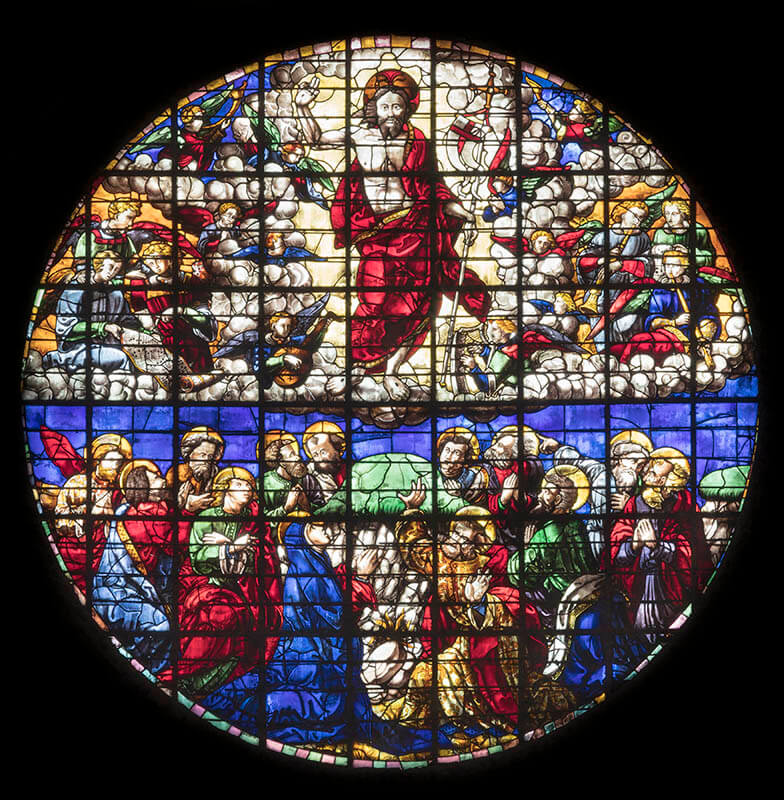
Arnao de FLANDES, 1539 – 1541
Hastial del crucero norte sobre la puerta de la Concepción
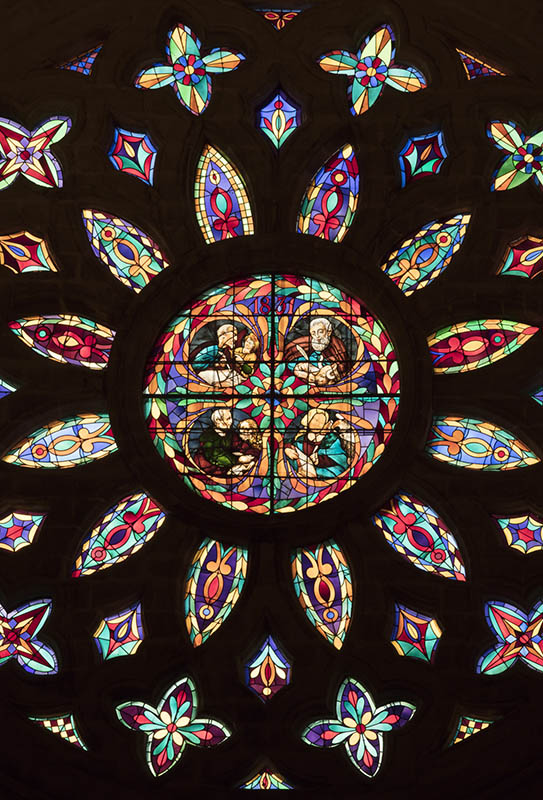
Vicente MENARDO, 1577
Fachada occidental, sobre la puerta principal
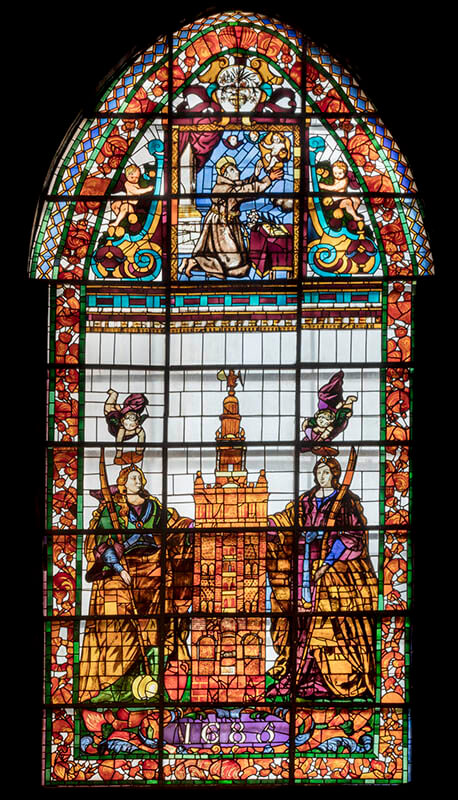
Juan Bautista de LEÓN, 1685
Capilla del Bautismo
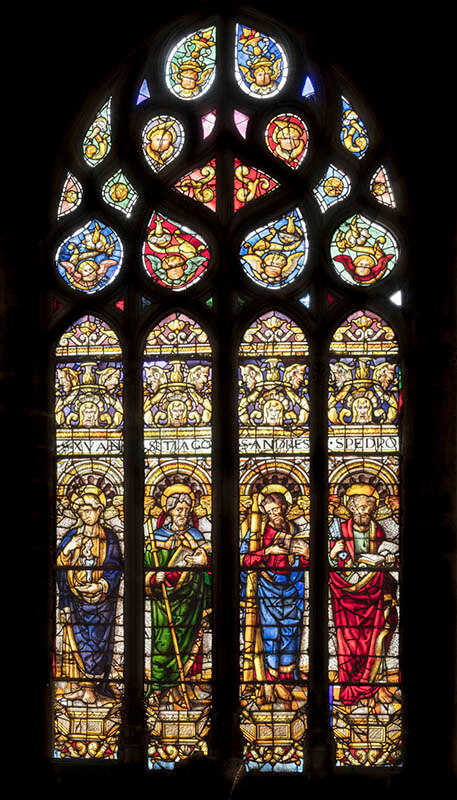
Arnao de FLANDES, 1543
Crucero al lado del Evangelio, primer tramo del lado oriental
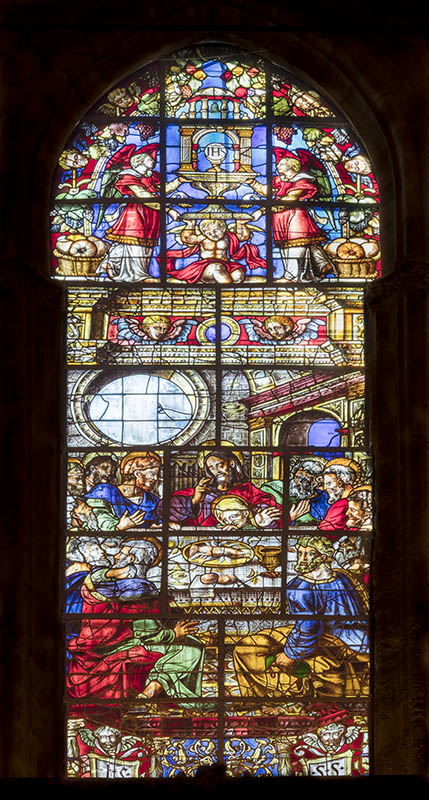
Arnao de FLANDES, 1555
Nave lateral de la Epístola sobre la capilla de San Andrés
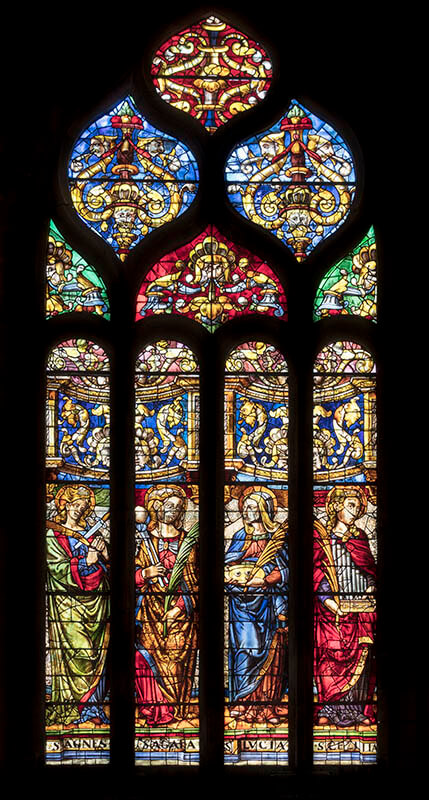
,
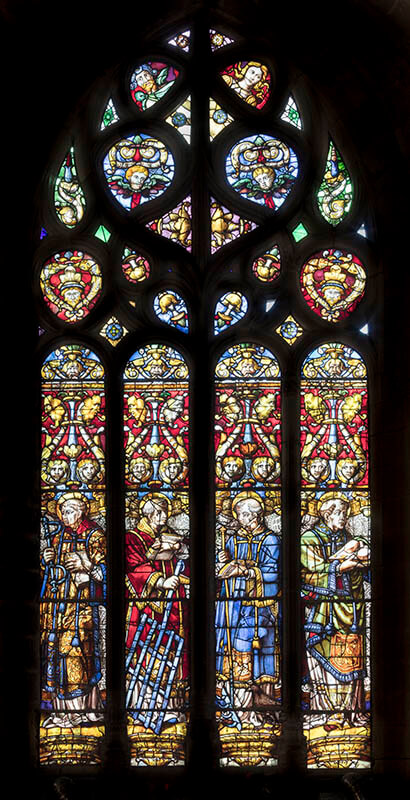
Arnao de FLANDES, 1548 – 1549
Crucero, lado del Evangelio, lado occidental
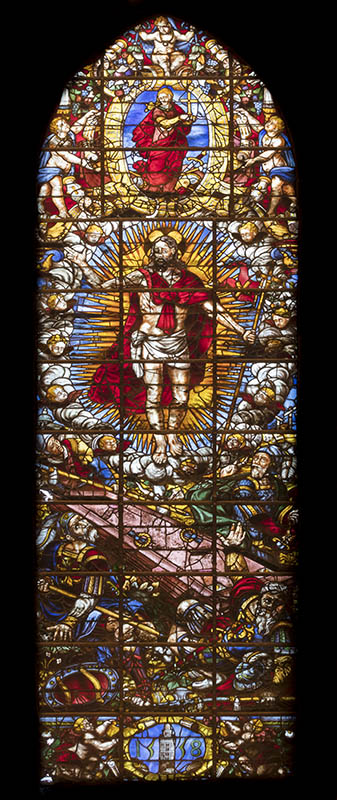
Carlos de BRUJAS, 1558
Crucero lado del Evangelio, lado oriental
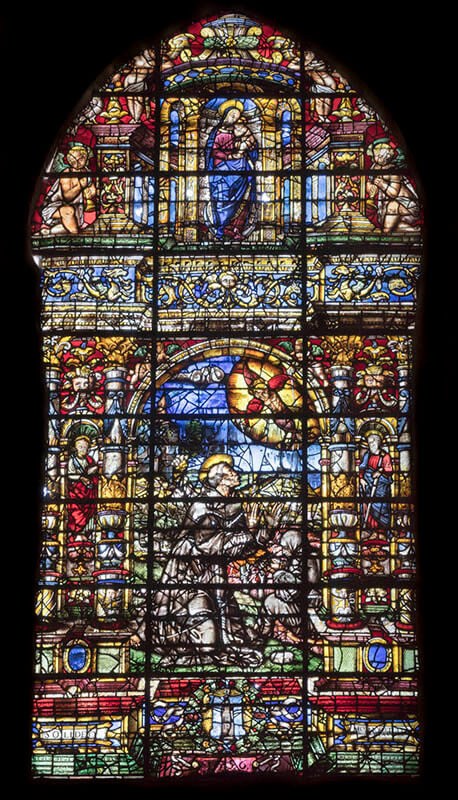
,
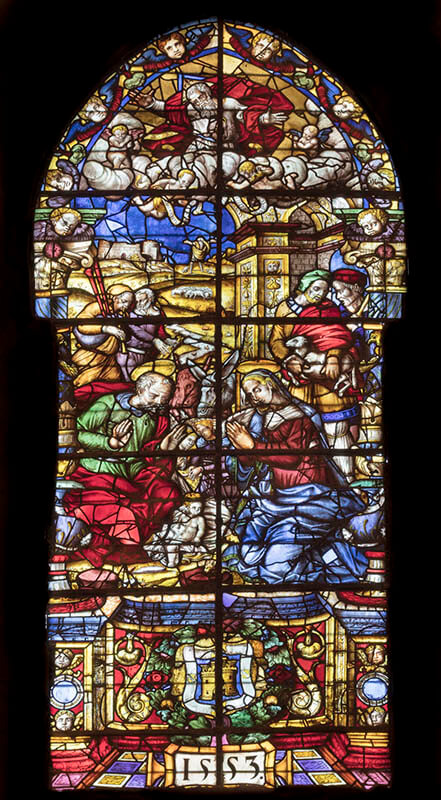
Arnao de FLANDES, 1533
Capilla de los Evangelistas
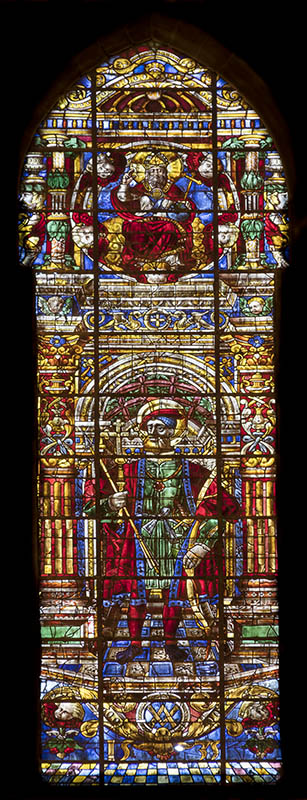
Arnao de VERGARA, 1535
Sobre la Puerta de Palos
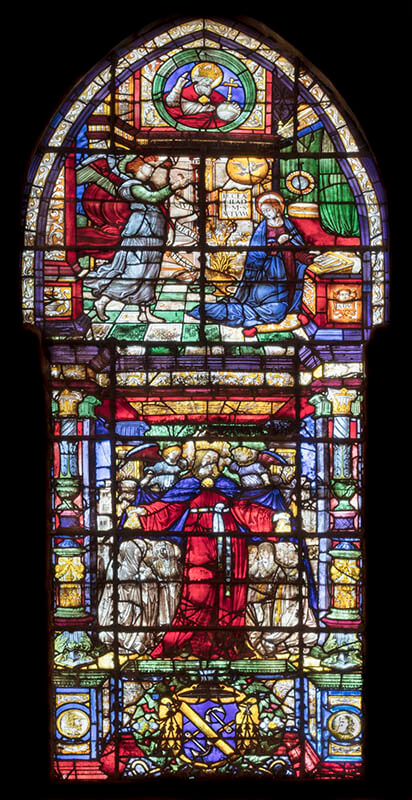
,
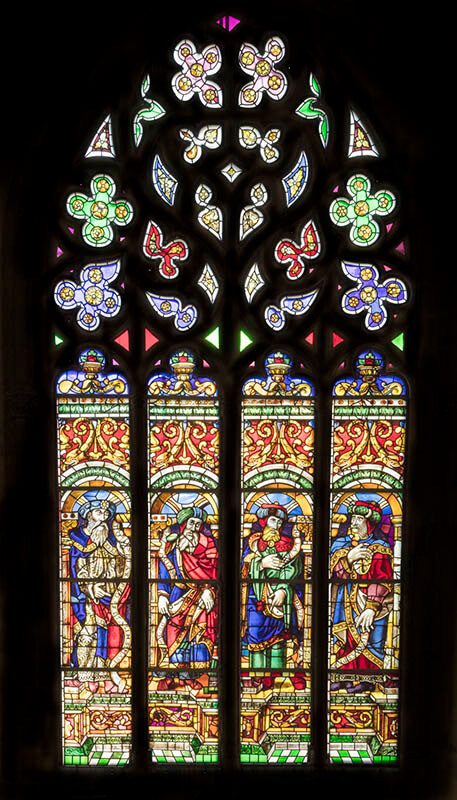
Arnao de VERGARA, 1534 – 1535
Nave central, tramo inmediato al crucero del lado del Evangelio
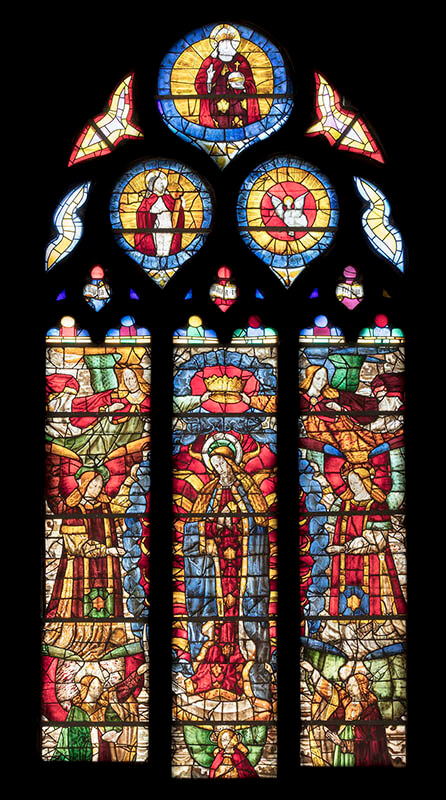
Juan JACQUES, 1511 – 1520
Capilla mayor, lado del Evangelio
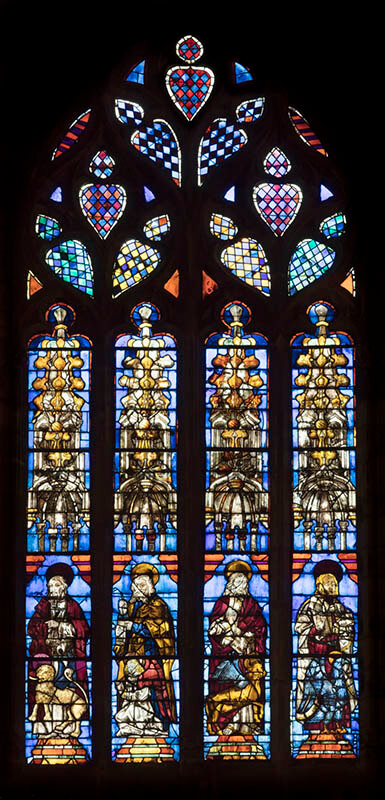
Enrique ALEMAN, 1478
Nave lateral del Evangelio, sobre la capilla de San Antonio
















IN THIS SECTION:
Stained glass
Thestained glass windows of the Cathedral of Seville constitute one of the most extensive, homogeneous and best preserved sets of Spanish cathedrals. The one hundred and thirty-eight preserved stained glass windows are also a magnificent chapter to know the history of this technique in the Iberian Peninsula, from the fifteenth to the twentieth century.
The shape of the windows and the iconography of their vitreous surfaces obey the different commissions and the construction stages of the building. The openings in the western half of the church and the central nave correspond to the oldest period of the construction, and are wider than those located from the transept to the chancel.
Gothic stained glass
The oldest stained glass windows are the seventeen that close the openings over the lateral chapels and the main west nave, made by the German shepherd Enrique Alemán, who also worked in the Cathedral of Toledo and is documented in Seville from 1478 to 1483.
His technique is a good testimony of his training and the technique developed by the German Peter Himmel von Andlau. The figures, perfectly individualized and with great graphic precision, spatially located under Gothic canopies, are arranged according to their iconography: prophets, apostles and saints linked to the diocese and to the most widespread devotions in the late Middle Ages.
Renaissance stained glass
Once the Gothic construction was completed, the Cathedral commissioned the stained glass windows of the main altar, transept and eastern aisles, both those located above the chapels and over the entrances and most of those that close the openings of the perimeter chapels.
The Renaissance master glassmakers worked continuously on its elaboration until the third decade of the sixteenth century, when they practically concluded the general program after a hundred years.
The Frenchman Jean Jacques made the two stained glass windows of the main altar (1511-1518), which are the first Renaissance ones in this temple. With the arrival of Arnao de Vergara, the humanist proposals in the technique of stained glass were strongly manifested: the new closure of the transept, the Virgin of Mercy of the chapel endowed by Micer García de Gibraleón, San Sebastián of the stained glass window located above the portal of the Palos that presents the features of Charles I, and the Assumption of the Virgin that closes the large oculus of the south transept (1525-1537).
A few years later, his brother, Arnao de Flandes is documented in the Cathedral from 1534 to 1557 where he made the stained glass window of the Ascension of the Lord for the opposite side of the transept gable, thirteen stained glass windows with saints in the transept and all those presenting scenes from the life of Christ in the eastern aisles. The stained glass windows in the chapels of St. Peter, St. Paul, St. Francis and the Evangelists are also his.
The stained glass window that closes the north arm of the transept represents the Resurrection of the Lord and is the documented work of Charles of Bruges (1558). During the second half of the 16th century, Vicente Menardo was commissioned to build the three stained glass windows of the west façade and other scattered windows. In 1578, when this Mannerist stained glass artist died, the entire program of stained glass windows of the Cathedral was practically finished and completed.
Baroque stained glass and neoclassicism
In the seventeenth, eighteenth and nineteenth centuries other artists made stained glass windows of interest that show the evolution of the same during the baroque and neoclassical period.
The stained glass window of Santa Justa and Santa Rufina, in the chapel of San Antonio, made by Juan Bautista León in 1685 and reformed in 1813, and the anagrams that close the lateral windows of the chapels of San Pedro and San Pablo in the decade of 1780, stand out from the Baroque period.
The stained glass window of the chapel of San Hermenegildo (1819) is practically the only testimony of neoclassical stained glass.
20th Century Stained Glass
At the end of the 19th century, the state of conservation of the stained glass windows made it necessary to initiate a restoration campaign and to conclude others pending in the area of the chancel and skylights. The stained glass window of San Fernando in the chapel of Antigua, designed by the historian José Gestoso, three of those destroyed in the collapse of the transept in 1888 and the Pentecost in the chapel of Scalas (1880) were made by Zettler of Munich.
Years later, Otto Kruppel of the Maumejean House designed the stained glass window of the chapel of St. Joseph, using ornamental elements of a stained glass window of the sixteenth century . This same house manufactured three more stained glass windows, undertook the first systematic restoration campaign of the twentieth century and counted among its workers or collaborators with Vicente Prianes, whose marks appear in numerous architectural elements of the windows dated 1930-1932.
Main glaziers
15th century. Enrique Alemán, author documented in Seville from 1478 to 1483. He made the oldest stained glass windows of the Cathedral, which correspond to the seventeen that close the openings located over the chapels and the main nave to the west. They denote the art of a glassmaker trained in German shepherd workshops, in which the Flemish influence can be appreciated, different from that of other authors who also intervened later.
He also worked in the Cathedral of Toledo, where you can appreciate the similarity of styles that printed the development of all his achievements, demonstrating in his art a dependent of the solutions of the German shepherd stained glass, specifically, of those developed by the workshop of Peter Hemmel von Andlau, which implants in an important series of stained glass windows for the Cathedral of Seville.
The beginning of the stained glass program is explained by the state in which the construction of the new building was in; presumably, the commissioning of the work had a very rapid execution if we consider the number of works that were carried out.
As we will see below in a sample of its value, it can be seen that in all his stained glass windows, the master followed the same layout that denotes the Germanic training of the author in which the solutions of Flemish painting, are projected with a formal precision and drawing typical of an engraver, that is, trying to approach the painting. After his departure, there is an important documentary silence in the creation of new works, since the masters immediately after his departure worked on the conservation of what already existed until 1510, when the figure of another master appeared.
XVI century. Jean Jacques, master successor of Enrique Alemán in the creation of new stained glass windows, is of French origin and is documented in Seville from 1511 to 1518. In it, the influence of French solutions from around 1500 is very noticeable. In the documents in which it is mentioned, it appears under different names, always referring to the teacher in question. He was Flemish, specifically from Zeeland and in 1508 he contracted with the chapter of the Cathedral of Santiago de Compostela the execution of the stained glass of the rose window of the western façade. From there he went to Portugal and then settled in Seville, probably attracted by the prestige and flourishing of the city.
He was trained with a plastic language, accrediting an assimilation of the solutions of Flemish painting in contact with the French. His work focused mainly on the stained glass windows of the main chapel and the dome, presenting important novelties and differences. His art denotes a training in the solutions of Flemish painting, but, using a stylization, elegance and color harmony typical of an artist endowed with a strong and original personality; he is the first to make stained glass with compositions, divided by several mullions.
The abandonment of the Flemish solutions of the fifteenth century and the implementation of new Renaissance proposals, have a period of interruption in the realization of new stained glass, until, in 1525 and after the departure of the master, appears documented a new one called: Arnao de Vergara.
Arnao de Vergara is the one who introduced the Renaissance forms in the manufacturing style of the new stained glass windows. From a formal point of view, from 1525 onwards, the stained glass windows of the Cathedral of Seville underwent a decisive change of direction. He was the first Spanish master to intervene in the realization of these works, introducing a fundamental change in the stylistic evolution based on the shift towards clearly mannerist approaches. In his creations he resolves the contradiction between traditional elements and the presence of Italian elements, using the architecture of the framing, the decorative elements, the perspective representation of space, the chromatic harmony and the soft cadence and rhythm of the proportions proposed by certain Italian painters of around 1500; the dichotomy between the expressiveness of the models and the classicism of the decorative elements is evident based on the exaltation and the cult of the grotesque. Probably born in Burgos and son of the glassmaker Arnao de Flandes “the old”, he received his Renaissance training in the artistic climate of Burgos impregnated with Italianism. His work in Seville was not limited only to the work of the Cathedral, but also made stained glass windows for the Alcazar, Jerez and Osuna, also appearing as a miniaturist to do work in the monastery of Las Cuevas. His work as a glassmaker ran alone until 1534 in which he appears working with his brother, Arnao de Flandes until he moved to Granada, where he was in 1538.
Arnao de Flandes appears as a glazier in the Cathedral in 1534, collaborating with his brother Arnao de Vergara before the latter left for Granada where he died. In his creations he proposes a change in the way of understanding the composition and proportion of the figures, but without distancing himself, especially in his beginnings, from the harmonic and balanced figures of the previous classicism, which is transformed into the characteristic mannerism of almost all his creations.
When he arrived in Seville, he was an artist with a coherent sensibility and orientation that gave him the ability to leave absolute classicism behind, introducing new gothic elements that are once again in force.